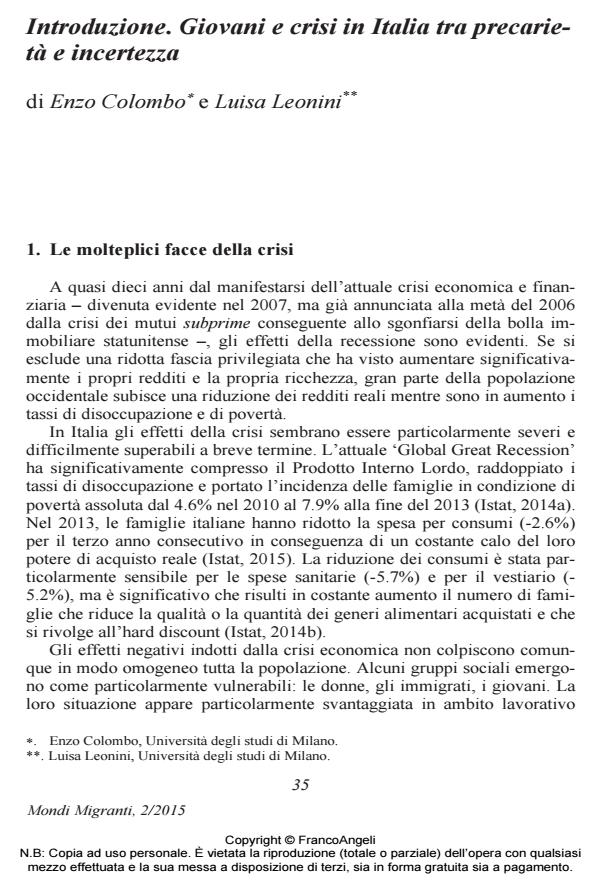Young People and Economic Crisis in Italy: Between Precariousness and Uncertainty
Journal title MONDI MIGRANTI
Author/s Enzo Colombo, Luisa Leonini
Publishing Year 2015 Issue 2015/2
Language Italian Pages 17 P. 35-51 File size 120 KB
DOI 10.3280/MM2015-002002
DOI is like a bar code for intellectual property: to have more infomation
click here
Below, you can see the article first page
If you want to buy this article in PDF format, you can do it, following the instructions to buy download credits

FrancoAngeli is member of Publishers International Linking Association, Inc (PILA), a not-for-profit association which run the CrossRef service enabling links to and from online scholarly content.
The article shows the complexity of the current economic and financial crisis. It applies an intersectional perspective in order to highlight the different effects the present ‘Global Great Recession’ is having on the lives of young people in Italy. Particular attention is given to the young people’s generation location and the consequences of the specific intertwining of gender, ethnic background and cultural capital. By analyzing the condition of young people within the crisis, it is clear that the traditional 'structural' dimensions (such as gender, class, ethnic background, social and cultural capital, the different geographical location, etc.), although still central in determining the effects of crises in individual lives, do not fully reveal useful if considered in isolation. Intersectional analysis evidences that the specific social location, result of the particular crossing of the different structural dimensions, produces distinct configurations of opportunities and constraints, supporting or hindering individual and collective agency.
Keywords: Generation, Young people, Intersectionality, Economic Crisis, Italy, Cultural capital
Enzo Colombo, Luisa Leonini, Introduzione. Giovani e crisi in Italia tra precarietà e incertezza in "MONDI MIGRANTI" 2/2015, pp 35-51, DOI: 10.3280/MM2015-002002